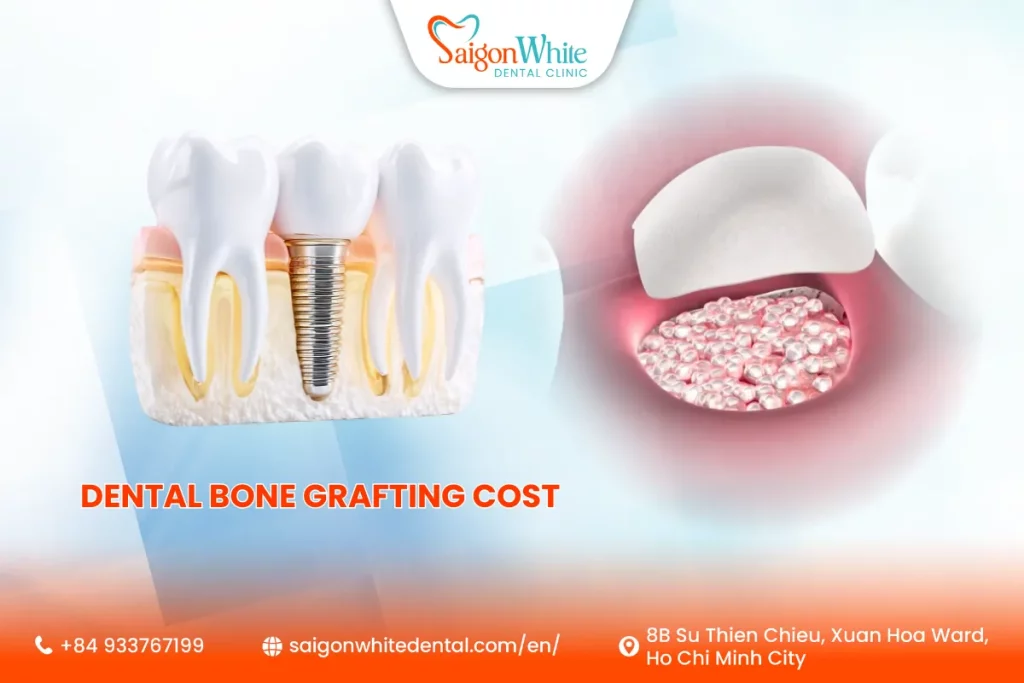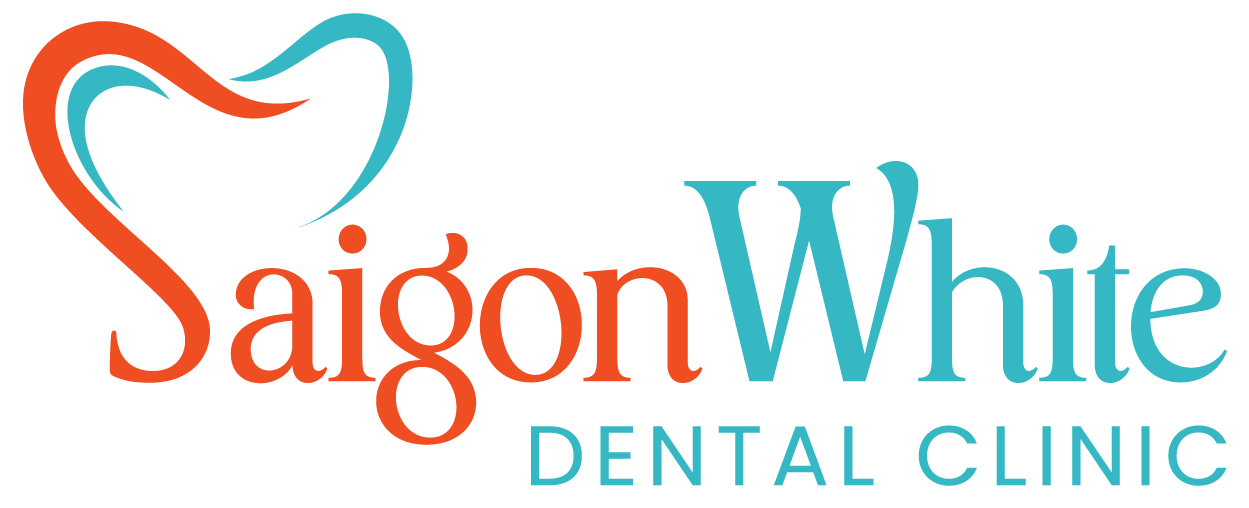Dental Bone Grafting Cost is one of the most common questions people ask before getting dental implants. While implants are considered the gold standard for replacing missing teeth — offering strength, natural appearance, and long-term stability — not every patient is immediately ready for the procedure.
Over time, when a tooth is lost, the surrounding bone begins to deteriorate. Without enough bone density, placing an implant becomes difficult or even impossible. That’s where dental bone grafting comes in — a procedure designed to rebuild and regenerate lost bone structure.

But how much does it really cost? And why do prices vary so much between clinics and countries?
This guide breaks down everything you need to know about dental bone grafting cost, including the key factors that affect pricing and why Vietnam has become one of the best-value destinations in the world for safe, high-quality bone grafting and implant treatment.
1. What Is Dental Bone Grafting and When Is It Needed?
A dental bone graft is a surgical procedure that adds or restores bone in your jaw where it has deteriorated. It’s most commonly performed to prepare the mouth for dental implants or to preserve bone after tooth extraction.
When a tooth is missing, the jawbone no longer receives stimulation through chewing. Over time, the bone begins to resorb — leading to bone loss, gum collapse, and even changes in facial shape.
Bone grafting solves this problem by using biocompatible materials to rebuild the area, allowing for a strong and stable base to support dental implants.
When Do You Need Bone Grafting?
- After tooth extraction, to prevent bone loss.
- Before dental implant placement (when bone density is low).
- After gum disease or infection that damages the bone.
- After trauma or injury to the jaw.
- To restore bone structure for better aesthetics.
By rebuilding lost bone, grafting ensures your implant looks natural and lasts for decades.
2. Types of Dental Bone Grafts and How They Affect Cost
The type of graft you receive plays a major role in determining the overall price. Different materials and techniques come with different levels of complexity and cost.
| Type | Description | Typical Cost Range (USD) |
|---|---|---|
| Autograft | Bone taken from your own body (e.g., jaw or hip). Offers the best compatibility but requires an extra surgery. | $1,000 – $2,500 |
| Allograft | Processed bone from a human donor, sterilized for safety. | $700 – $1,500 |
| Xenograft | Bone from animal sources (usually bovine). Highly biocompatible and widely used in implant dentistry. | $500 – $1,000 |
| Synthetic (Alloplastic) | Artificial graft materials, such as hydroxyapatite or tricalcium phosphate that stimulate new bone growth. | $300 – $800 |
- Autografts tend to be more expensive because they involve two surgical sites (harvest + placement).
- Xenografts and synthetic grafts are popular for their safety, affordability, and consistent results.
3. The Dental Bone Grafting Procedure: Step by Step
A typical bone graft procedure is straightforward and performed under local anesthesia.
- Consultation and 3D Imaging
Your dentist performs a clinical exam and takes a 3D Cone Beam CT scan to assess bone structure, height, and density. - Treatment Planning
A personalized plan is created based on your bone condition, graft type, and whether an implant will be placed immediately or later. - Bone Graft Placement
The graft material is gently packed into the deficient bone area. In some cases, it’s covered with a collagen membrane to protect the site. - Healing Phase (3–6 months)
The graft integrates with your natural bone, creating a strong foundation for an implant. - Follow-Up and Implant Placement
Once the area has healed, your dentist places the implant precisely using guided surgical techniques.
Modern clinics use 3D-guided technology and digital workflow systems to ensure precision, reduce healing time, and minimize discomfort.
4. How Much Does Dental Bone Grafting Cost? (By Country)
The cost of dental bone grafting varies significantly depending on location, material, and clinical standards. Here’s a global comparison:
| Country | Average Cost per Graft (USD) | Notes |
|---|---|---|
| USA | $800 – $2,500 | High due to labor and insurance costs |
| Australia | $1,000 – $2,000 | Quality care, but expensive |
| UK | £600 – £1,800 | Moderate range; private clinics only |
| Thailand | $300 – $600 | Popular for dental tourism |
| Vietnam | $200 – $500 | International-level care at an affordable cost |
That means patients traveling to Vietnam can save up to 70–80% on the same procedure — without compromising quality or safety.
6. What Affects the Cost of Dental Bone Grafting
Several factors influence the total price of bone grafting. Understanding these will help you make an informed decision:
1. Type of Graft Material
Different materials have different costs. Synthetic grafts are generally the most affordable, while autografts require extra surgical steps, increasing the price.
2. Size of the Defect
Small socket grafts (after tooth extraction) are cheaper than full ridge augmentations or sinus lifts that require more material and time.
3. Complexity of Surgery
Advanced procedures like sinus lift bone grafts or vertical ridge reconstruction demand higher precision, special membranes, and surgical skill.
4. Dentist’s Experience
Highly qualified implantologists or oral surgeons may charge more, but their expertise ensures predictable and long-lasting results.
5. Clinic Technology and Facilities
Clinics using 3D CT scanners, digital planning, and guided surgery systems often provide better outcomes but may include technology fees.
6. Country and Location
Prices vary globally due to living costs, medical regulations, and clinic overheads. That’s why dental tourism in Vietnam, Thailand, and Turkey is booming.
7. Additional Procedures
If your treatment involves PRF (Platelet-Rich Fibrin), membranes, or simultaneous implant placement, the total price will be slightly higher.
7. Why Vietnam Offers the Best Value for Dental Bone Grafting
Vietnam has rapidly become one of the world’s most trusted destinations for dental implants and bone grafting. Here’s why patients from the U.S., Australia, and Europe are choosing to fly here for treatment:
1. Affordable, Transparent Pricing
With lower operational costs and competitive material pricing, Vietnam offers international-standard bone grafting for $200–$500 USD, a fraction of Western costs.
2. International Standards of Care
Leading clinics like Saigon White Dental adhere to ISO sterilization protocols, use FDA-approved materials (Bio-Oss, Geistlich, Straumann), and follow strict hygiene procedures.
3. Experienced, Globally Trained Dentists
Vietnamese implantologists often train in Korea, Japan, France, or Australia, bringing world-class skills to local clinics.
4. Modern Equipment and Technology
State-of-the-art tools like 3D Cone Beam CT scanners, CAD/CAM milling, and guided surgery systems ensure precision and safety.
5. English-Speaking Staff and Personalized Care
Clinics catering to international patients offer English-speaking support and clear communication throughout your treatment journey.
6. Ideal for Dental Tourism
Beyond affordable treatment, Vietnam offers vibrant culture, tropical landscapes, and luxurious recovery experiences in cities like Ho Chi Minh City, Hanoi, and Da Nang.
8. Cost Comparison: Bone Graft + Dental Implant Package
Most patients require both bone grafting and dental implant placement. Let’s see how the total package costs compare internationally:
| Country | Bone Graft + Implant Package (USD) | Quality |
|---|---|---|
| USA | $4,000 – $6,000 | ⭐⭐⭐⭐⭐ |
| Australia | $3,500 – $5,000 | ⭐⭐⭐⭐ |
| Thailand | $1,200 – $1,800 | ⭐⭐⭐⭐ |
| Vietnam | $900 – $1,400 | ⭐⭐⭐⭐⭐ |
Even when factoring in travel and accommodation, patients in Vietnam can still save 60–75% overall.
9. Dentist’s Insight: Why Quality Matters More Than Price
From a professional standpoint, the success of a bone graft isn’t about finding the cheapest option — it’s about ensuring proper healing, integration, and long-term stability.
“A successful bone graft relies on high-quality materials, accurate planning, and a clean surgical environment,”
says Dr. Tan, an implant specialist at Saigon White Dental.
Choosing a clinic solely based on price can lead to poor outcomes, infections, or implant failure. It’s essential to verify:
- The brand and origin of graft materials.
- The dentist’s credentials and experience.
- The clinic’s sterilization and technology standards.
- Follow-up care and treatment warranty.
At Saigon White Dental, all bone graft and implant procedures are performed under sterile, digitally guided conditions — giving patients peace of mind and lasting results.
10. FAQs About Dental Bone Grafting Cost
Q1: Is bone grafting always required before getting implants?
Not always. It depends on bone density and structure. Your dentist will evaluate this with a 3D CT scan.
Q2: Is bone grafting painful?
The procedure is done under local anesthesia, so there’s minimal discomfort. Most patients recover easily within a few days.
Q3: How long does bone graft healing take?
Typically, 3–6 months for full integration, depending on graft size and material.
Q4: Are bone graft materials safe?
Yes. Reputable clinics use materials approved by the FDA and European CE standards, ensuring complete biocompatibility.
Q5: Can bone grafting and implant placement be done together?
Yes, in many cases. If bone loss is minor, your dentist may perform both procedures in a single visit.
Q6: How much can I save in Vietnam compared to Western countries?
You can save up to 70–80% while receiving the same standard of care as in Australia or the U.S.

 Telegram
Telegram